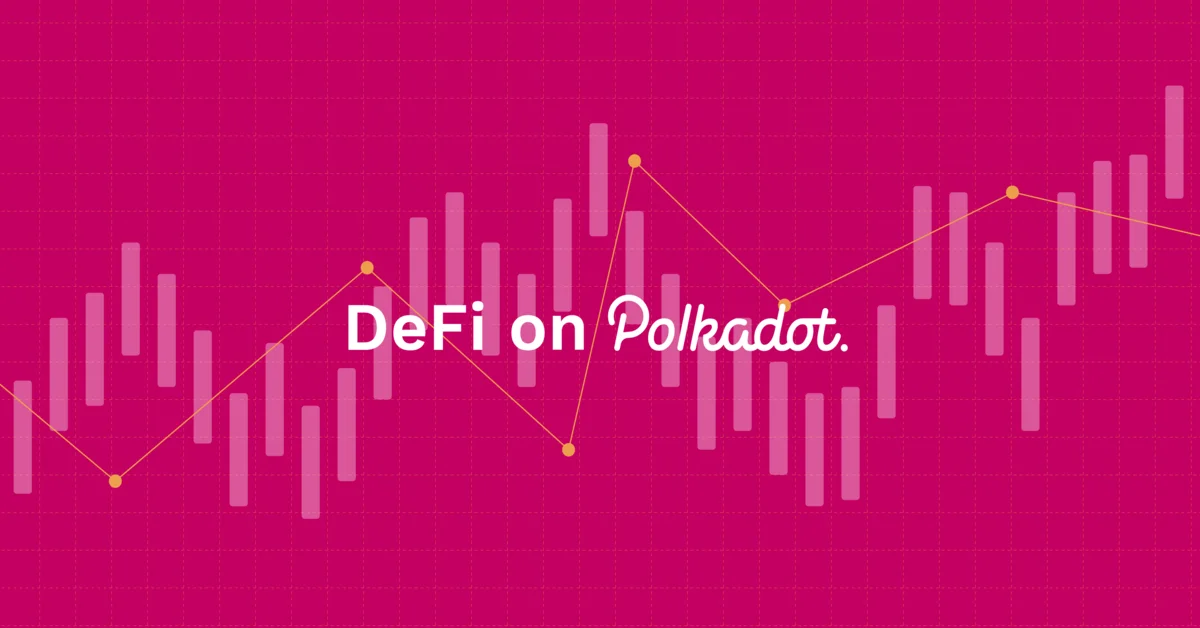Polkadot And DeFi — A Pairing For The Ages

There’s no denying the fact that decentralized finance (DeFi) has quickly emerged as one of, if not the most, important use cases related to the cryptocurrency market.
This is best reflected by the market’s continued growth, with the total capital locked within space having risen from $45 bln to around $80 bln over the course of the past 12 months alone.
In its most basic sense, DeFi can be thought of as a blockchain-based technology allowing for the creation of novel applications that provide individuals all over the globe with access to high-quality financial services, ranging from lending/borrowing to P2P trading to staking.
DeFi on Polkadot – An overview
As things stand, a large portion of the DeFi sector continues to be centered around the Ethereum ecosystem, however, due to its enormous scalability limitations (15-30 tps), the network is known to regularly levy transaction fees ranging as high as $20 – $50 per txn during peak times — all while being excruciatingly slow when compared to many of its closest rivals.
Ethereum’s inability to provide users with low-cost, real-time transactions has seen a growing number of DeFi enthusiasts adopt competing network Polkadot since the latter offers a throughput rate of 1,000 tps and confirmation times of under 120 seconds as compared to Ethereum’s 5 minutes
Also, quite unlike its closest rivals including Cardano, Ethereum, Solana, Binance Smart Chain — all of whom are essentially standalone blockchains — Polkadot seeks to reimagine the crypto sector by transforming it from a group of individual projects to a unified ecosystem where various decentralized apps built across different networks are able to communicate with each other with the touch of a button.
In this regard, Polkadot makes use of a parachain based setup, wherein each chain can be thought of as a separate project capable of transacting with all of the system’s remaining parachains, thus allowing for the seamless transfer of value (be it encrypted data, funds, personal information, etc).
Projects worth noting
Centrifuge
Centrifuge is touted to be the world’s first decentralized operating protocol built atop the Polkadot network. It helps connect ‘real-world assets’ (RWAs) to the burgeoning DeFi universe with the aim of bringing down capital cost requirements for small and medium-sized enterprises (SMEs).
Since SMEs need a lot of third-party monetary involvement to grow sustainably (especially when compared with major corporations) they need easier access to capital.
Centrifuge makes capital accrual streamlined by allowing businesses to exchange a wide array of documents — such as invoices, tax receipts, etc — while encrypting them at the same time.
Furthermore, the project eliminates the need for banks and other financial intermediaries by utilizing smart contracts, allowing individuals to borrow capital effortlessly.
Lastly, Centrifuge bridges the gap that currently exists between borrowers and investors by providing them with direct access to the DeFi universe, all while maintaining a high level of liquidity.
Acala
Acala is a decentralized financial hub built on the Polkadot network allowing clients to not only use its various suite of products but also develop a wide array of financial applications using the platform.
From a functional standpoint, the project comes replete with a host of DeFi tools including a USD pegged stablecoin (aUSD), decentralized exchange (DEX), staking module, amongst other items.
Furthermore, Acala provides users with a high degree of interoperable cross-chain functionality while utilizing various robust security protocols.
To this point, the system is compatible with the Ethereum Virtual Machine (EVM) making transactions between Polkadot and Ethereum extremely straightforward.
StaFi
StaFi is one of the first decentralized protocols designed to unlock the liquidity of staked assets. To elaborate, using the platform, clients have the power to stake their Proof of Stake (PoS) tokens — which are essentially “non-tradable” until the time they are staked — in lieu of a currency called “rToken”.
These rTokens can help users accrue staking rewards as well as trade the underlying locked staking token.
Polkadot’s position as a DeFi leader is set to keep increasing
As the global DeFi ecosystem continues to expand and mature, it stands to reason that investors operating within this space will continue to expand their operational horizons and continue to gravitate towards the use of Polkadot.
This is because the network not only offers extremely quick and affordable transactions but also a high degree of cross-chain compatibility, something that not a lot of networks can boast of.













